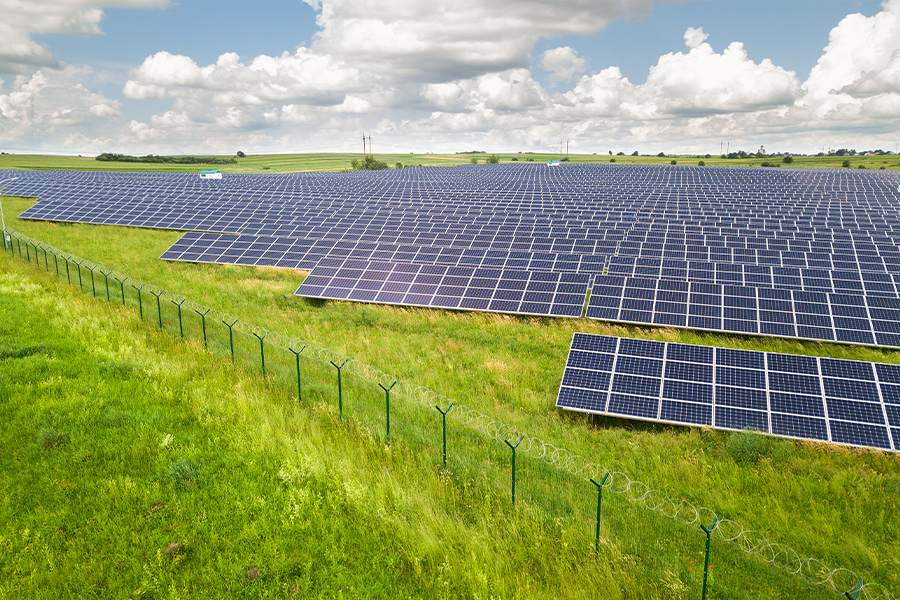In the 19th and 20th centuries, the first generation of power plants were built. At that time, renewable energy such as On-Grid solar plant was still not used, and electricity generation was mainly done through water turbines and steam. Gradually, newer power plants emerged that used fossil fuels like coal and oil more or used nuclear fuels.
One of the fundamental problems with fossil fuel power plants is the supply of the fuel they require. Fossil fuels, which are used to generate energy, are finite resources. Therefore, it is better to conserve them for future generations and not use them excessively or outside of a framework. Additionally, the construction costs of these power plants are high. The issues mentioned are just a few of the problems and concerns associated with these power plants.
All of these challenges, as well as the breathtaking speed of technological advancement, have led humans to move towards the use of renewable resources. Among these resources, solar energy is one of the most widely used and popular, which can operate in the form of On-Grid solar plant to generate electricity in the national grid and play one of the most important roles in this field.
The contents you read
Definition of On-Grid solar plant
A On-Grid solar plant is an electricity generation system that harnesses sunlight through solar panels or concentrated Solar Power systems, converting it into electrical energy. The generated electrical energy is fed into the power grid and distributed among consumers.
Types of On-Grid solar plant
The two types of On-Grid solar plant with the highest usage are being examined below;
Photovoltaic (PV) plant
This type of On-Grid solar plant is currently the most common and widely used solar power plant that converts direct sunlight into electricity using solar panels. The power plant can be used in several different types, for example, on a large-scale for urban facilities or smaller systems that are placed on the roof.
This type of power plant is divided into several categories based on its scale configuration and location which we describe the main types;
Utility-scale photovoltaic plant
There are power plants that are able to produce high-power electricity by using large areas and high-capacity solar panels. These power plants, which are also called farms, are implemented on a large-scale and can usually be used to inject into the national electricity grid. The capacity of these power plants can range from a few megawatts to hundreds of megawatts.
In On-Grid solar plant, utility-scale Photovoltaic (PV) arrays are used on the ground or on solar tracking systems to maximize the efficiency of energy production.
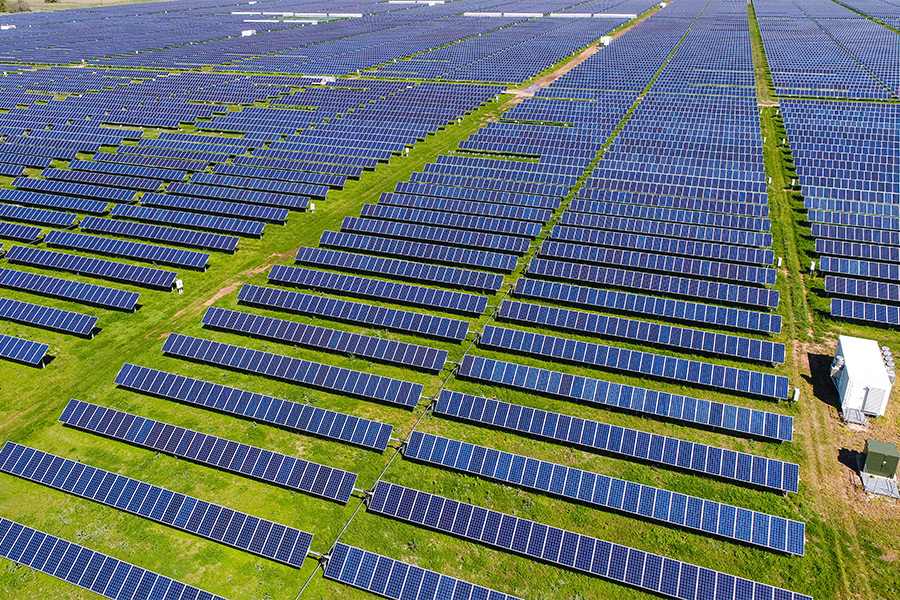
Commercial and industrial photovoltaic (PV) plant
Power plants are used to meet the energy needs of the commercial and industrial sectors. The On-Grid solar plant is operated on scales ranging from several hundred kilowatts to several megawatts, according to various factors such as the amount of energy needed, the amount of space suitable for construction, budget, etc. It’s variable.
Such power plants are usually built on industrial structures, commercial spaces, offices, etc. They are installed on a medium or almost large-scale, reducing the cost of industrial electricity and even helping to generate more revenue for industrial and commercial units.
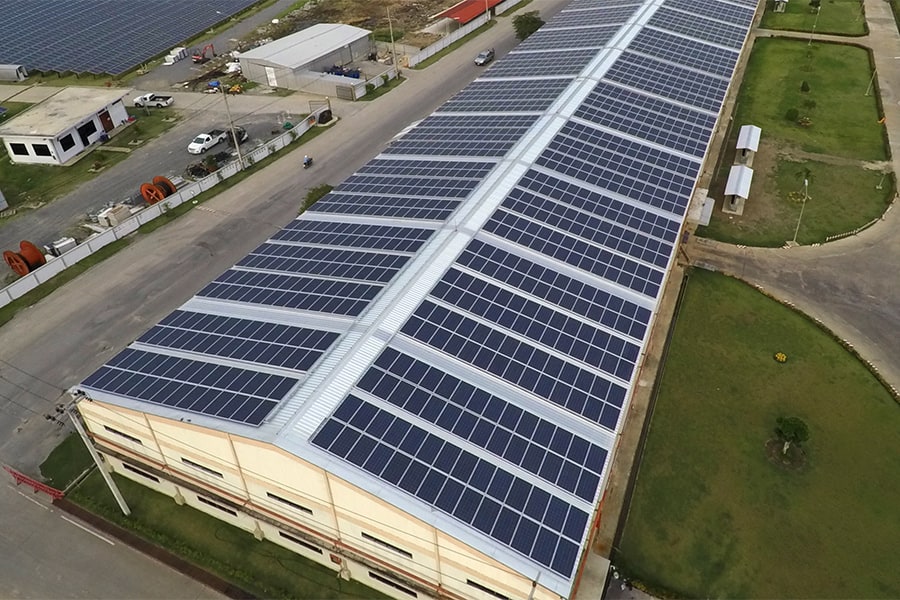
Residential photovoltaic (PV) plant
The use of On-Grid solar plant on the rooftops or ground of residential buildings or small businesses is one of the most common applications of photovoltaic power plants. These power plants, typically operating at small-scale capacities of a few kilowatts, can generate and supply their produced electricity to the grid, contributing to revenue generation like other power plants.
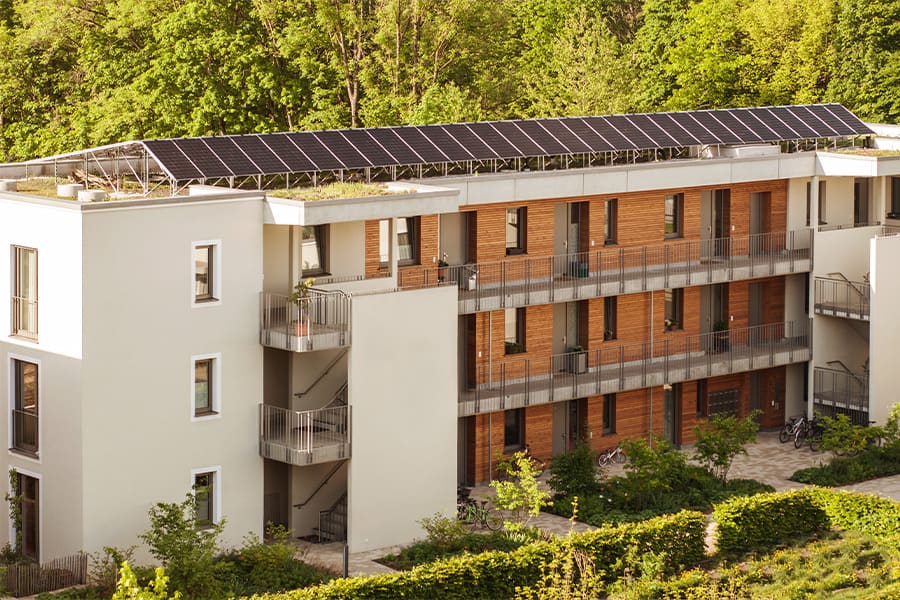
Floating photovoltaic (PV) plant
The solar power plant that floats on sea, lakes, or ponds (by special platforms that support solar panels). These power plants offer benefits such as increased land availability, reduced water evaporation, and enhanced panel cooling due to proximity to water.
The floating power plant can be deployed on a large-scale or in small installations on existing water bodies, and alongside the mentioned benefits, it also faces challenges such as harsh environmental conditions like heavy waves and the detrimental effects on aquatic ecosystems and wildlife.
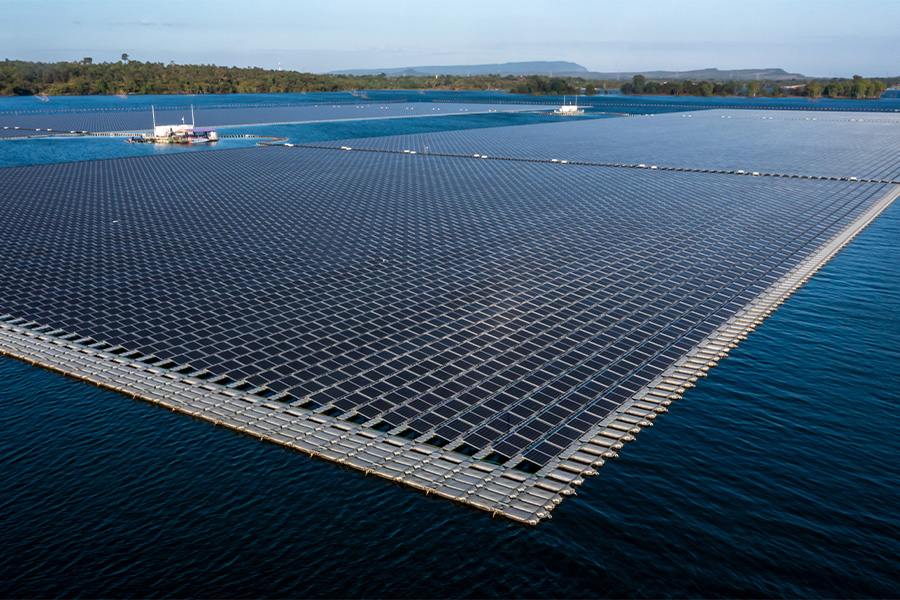
Concentrated Solar Power (CSP) Plant
It is a type of solar power plant that uses mirrors and lenses to focus sunlight to create high-temperature heat. The heat generated by this system is directed to a receiver located above a tower or in a parabolic.
The concentrated solar receiver absorbs sunlight and transfers thermal energy to a fluid medium such as water or synthetic oil circulating through it. The fluid is heated and produces steam (e.g., water is placed on hot pipes or installations, causing steam), which moves by the steam generated by the turbine, or the fluid moves the turbine directly.
The concentrated solar power plant has the ability to generate large-scale electricity, and its main advantage is the ability to store thermal energy, which allows it to continue generating electricity even when sunlight is not available (such as at night). This system is especially suitable for areas where there is a lot of sunlight and can play an important role in reducing greenhouse gas emissions and diversifying the energy production mix, but due to technical problems and high prices, they have less installation capacity than photovoltaic power plants around the world.
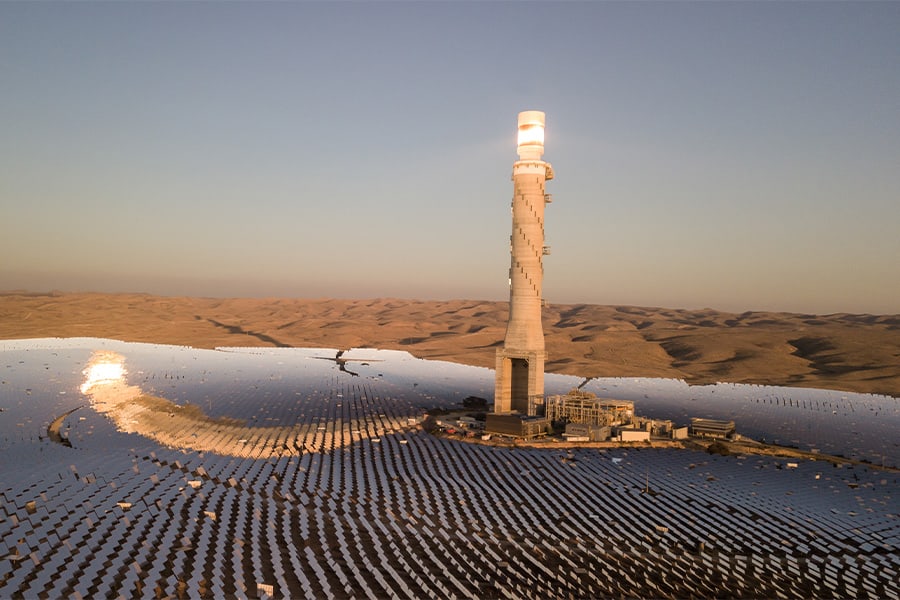
Main components of the On-Grid solar plant
To set up a On-Grid solar plant, it is necessary to use various parts and equipment, the main of which are:
Solar panel
The main part of an On-Grid solar plant is a solar panel, also called a solar module, which converts sunlight into electricity through solar cells. Solar panels are installed on a suitable frame, which should have sufficient lighting, sufficient space, easy access and no shading.
Currently, the solar panels that are used are divided into three categories; Polycrystal, monocrystal and thin film. According to the desired region in terms of climate and other characteristics considered by experts, the best option is selected and used. In different scales of the On-Grid solar plant, the number of panels used varies, for example, in a large-scale solar power plant, thousands of solar panels may be used in arrays.

Inverter
The direct current (DC) generated by solar panels is converted to alternating current (AC) or usable current for consumers. On-Grid solar plant inverters also synchronize the system output with the frequency and voltage of the power grid and have a system that stops power generation during a widespread power outage, thereby preventing potential hazards.
Inverters usually have local monitoring and control capabilities and communication with the power grid to optimize power generation and consumption. On-Grid inverter has three types: single-phase, three-phase and central (three-phase with high output power).
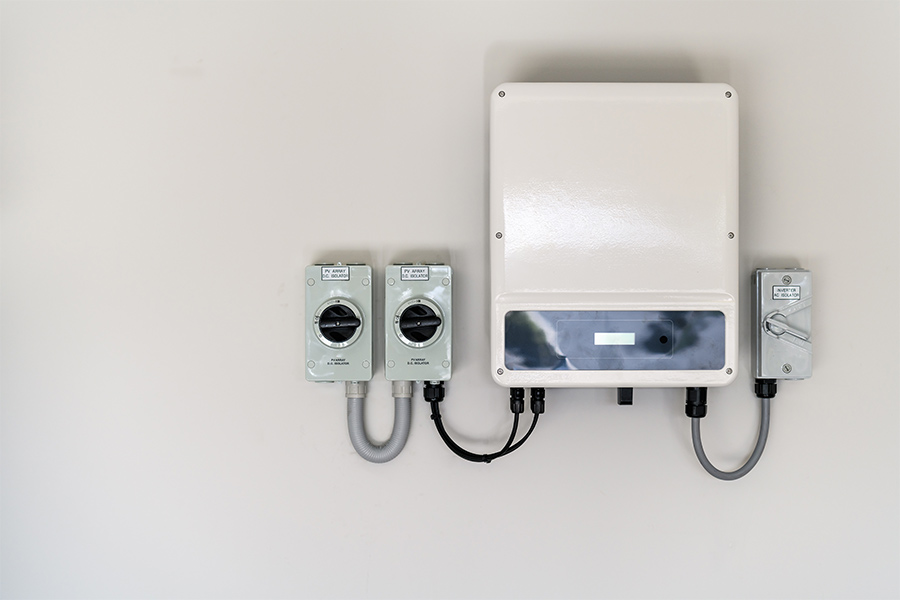
Structure
The solar panel must be installed safely on a structure capable of withstanding various weather conditions. Proper tilt and orientation should be considered for maximum solar energy absorption. On-Grid solar plant structures can be installed and implemented on rooftops, on the ground, or in any location approved from an engineering standpoint.
Structures come in various types such as fixed tilt structures, single-axis trackers, and dual-axis trackers. Movable structures, by following the path of the sun, maximize solar irradiance absorption, thereby achieving maximum energy production.

Electrical Panel, Wiring, and Electrical Protection
The On-Grid solar plant features an extensive electrical panel and protective equipment for managing and safeguarding the power generation process. This equipment include circuit breakers, relays, fuses, and devices for protecting against overcurrent, short circuits, and voltage fluctuations to safeguard the equipment.
A power plant needs proper wiring to connect solar panels, inverter and other components. This includes internal wiring, external wiring, cables, connectors, junction boxes and circuit breakers to protect against overcurrent or electrical faults.
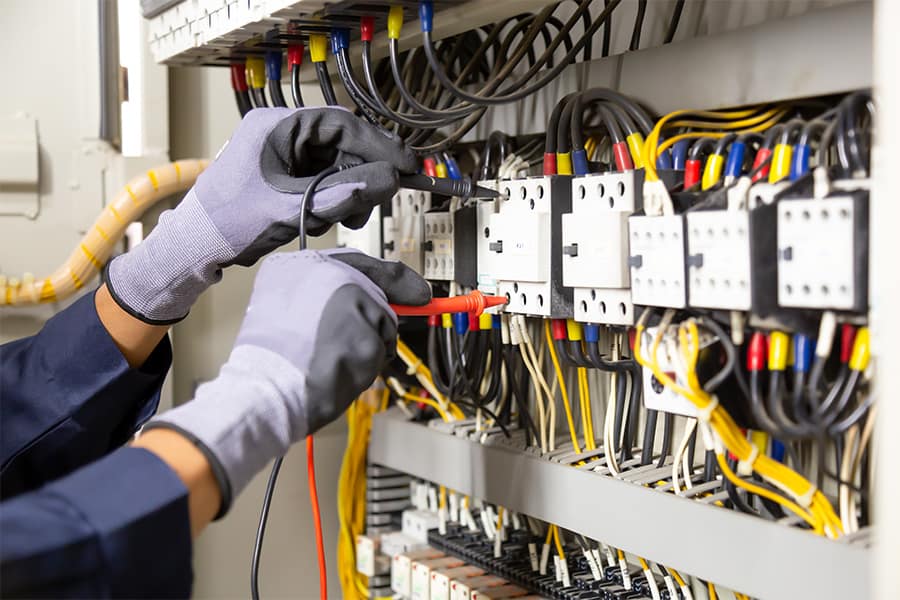
Earthing System
One of the most important aspects to consider in electrical safety is grounding the system to ensure protection against electrical shocks such as lightning and prevent accidents. Regular maintenance of wiring and electrical equipment in a solar power plant is also crucial to ensure optimal performance and system stability, including regular inspections, electrical testing, and continuous monitoring of equipment performance.
It is worth noting that the specific equipment used in an On-Grid solar plant can vary depending on the size of the power plant, the location of the power plant, and the preferences of the designer.
Advantages of On-Grid solar plant
In the following, we examine some of the advantages of solar power plants, although their advantages are much more than the ones mentioned;
Earning income
By establishing the On-Grid solar plant, a sustainable income can be generated (from small to large-scale), the amount of which varies depending on the announced purchase rate in each country. (This case is different according to the laws of the countries)
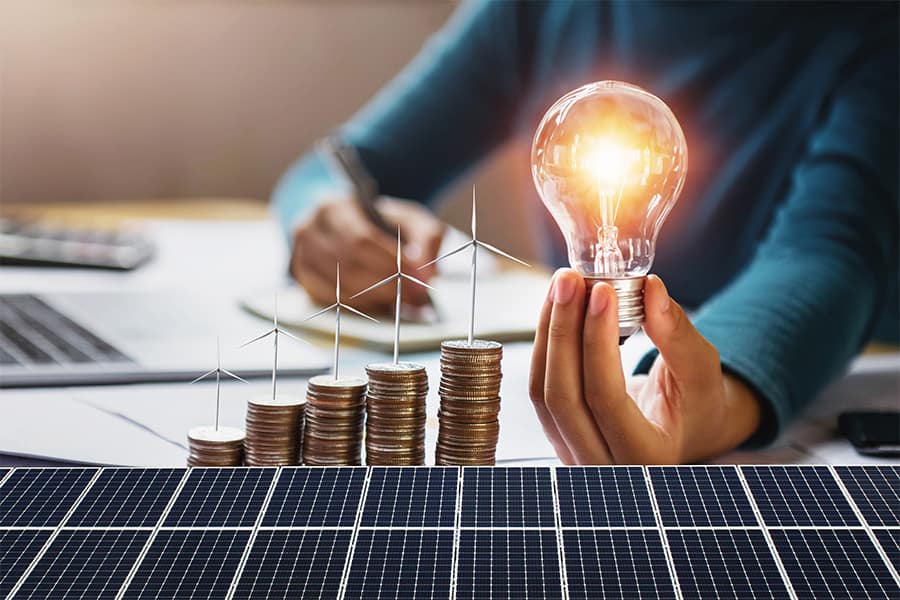
Costs reduction
The cost of electricity generation through solar power plants has decreased significantly in recent decades. Advances in solar technology, research and development, increasing the scale of production and modern installation systems have reduced the cost of solar power generation and made it an economical option.
Reduction of dependency on fossil fuels
By using solar power plants, dependence on fossil fuel sources such as oil and natural gas is reduced and no raw materials are needed to generate electricity, which helps reduce costs and dependence on foreign energy sources, and makes us have a more diverse energy portfolio.

Unlimited resources
Sunlight is an unlimited source, it radiates every day, and the On-Grid solar plant uses it to generate energy.
Green and clean energy
It has no air pollution or greenhouse gas emissions, and it can reduce fossil fuel consumption and help preserve the environment.
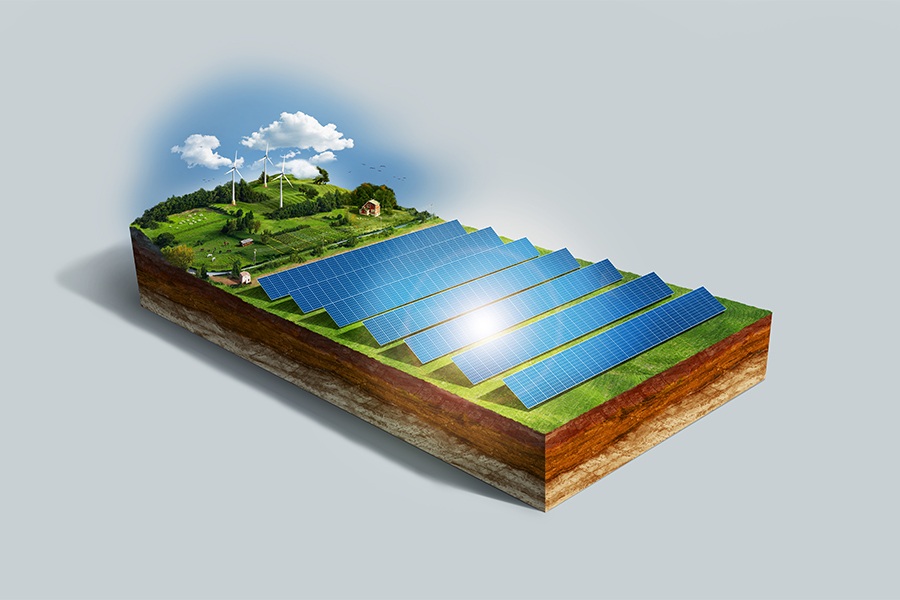
Maintenance cost
The cost at On-Grid solar plant is very insignificant while it is very high in fossil fuel power plants.
